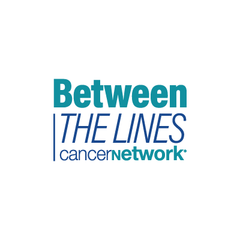
Patient Characteristics in ELEVATE-RR
Dr Bishop comments on the characteristics of the patients with CLL who were enrolled in the ELEVATE-RR trial.
Episodes in this series

Michael R. Bishop, MD: When we look at the patient characteristics, the median age was right around 65, and about 16% of those patients were 75 or older. Bruce, in your patient population, what would you say is the median age of the patients you’re seeing? What percentage of patients are over the age of 75?
Bruce B. Bank, MD: The median is right around 65, and probably 25% or so are over 75.
Michael R. Bishop, MD: That’s what I’d [expect] for a typical practice. When I sit down with the fellows and do a journal club with them, I ask, “What do you think would be seen in a community practice?” Because if you’re getting a concentration that’s coming to an academic center or getting on a clinical trial, is that what we see in our typical clinical practice? That’s important.
When they looked at 17p deletion, 45% of these patients had a 17p deletion, and between 62% and 66%, respectively, had 11q deletion. One important thing is they also looked at IGHV mutational status. This is an underappreciated poor prognostic feature. In this, 82% in the acalabrutinib arm and 89% in the ibrutinib arm had unmutated IGHV, which is a poor prognostic factor. This is relative to the number of prior therapies; the median was 2. The overwhelming majority of patients had received between 1 and 3. That made up 87% and 89%, respectively. Very few of these patients had received 4 or more, only about 10% to 12%, respectively. This study was done between 2015 and 2017. This comes back to what Bruce was saying. It hasn’t been that long that we’ve had ibrutinib available for the treatment of chronic lymphocytic leukemia [CLL].
This was an international trial. It was primarily performed in the United States and Europe, but there were also some investigators in Australia. When we look back, what did these patients receive as their first-line therapy? Ninety percent of them—not a big surprise—received alkylators; 85% received an anti-CD20 monoclonal antibody, which I have to assume was rituximab; and about 60% to 65% received purine analogues. That would probably be the FCR [fludarabine, cyclophosphamide, rituximab] regimen, but there were some other forms of chemotherapy, including one Bruce was talking about, R-CHOP [rituximab, cyclophosphamide, doxorubicin, vincristine, prednisone]. There was even a small percentage of patients who received alemtuzumab, which has known activity in CLL.
Transcript edited for clarity.
Newsletter
Stay up to date on recent advances in the multidisciplinary approach to cancer.




















































































